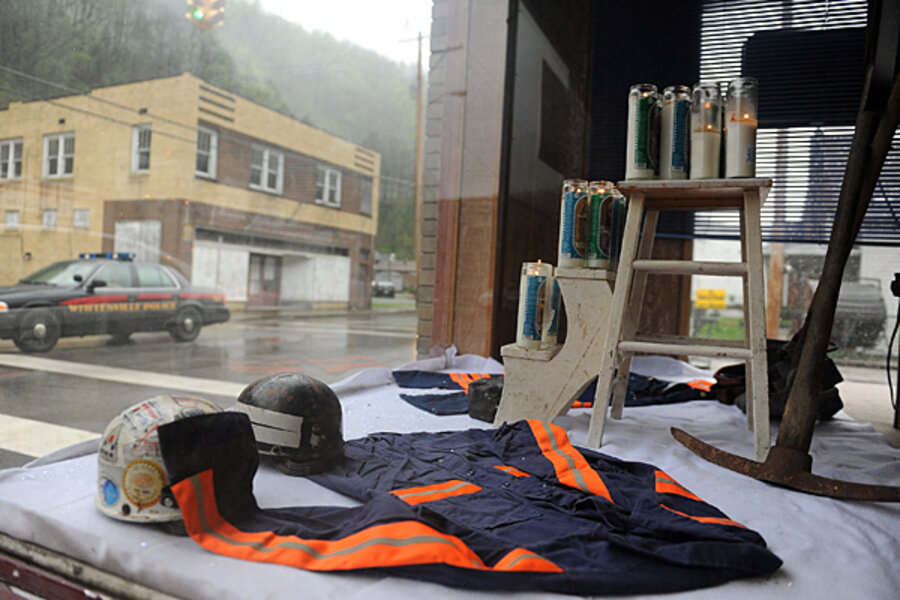West Virginia coal mine rescue weighs desperation with caution
Loading...
| Chicago
Rescuers were 500 feet from the airtight rescue chamber where four potential survivors of the West Virginia coal mine explosion might be, when they were forced to turn back by air-quality readings that showed rising levels of a potentially deadly mix of gases.
Officials said Thursday they are drilling new boreholes to release the air, in the hopes that rescue team could reenter and continue its search. But West Virginia Gov. Joe Machin said early Thursday night that, though conditions in the mine were improving, rescue workers still could not enter.
The presence of dangerous gases following destructive explosions is a “continuing problem” with mine rescue operations, says Davitt McAteer, who was the lead investigator of the 2006 disaster in Sago, W.V., which killed 13 miners.
“You cannot in good conscience send forward these mine rescue guys when the gases in the area have the potential to blow up in a heartbeat,” he says.
Monday’s explosion at the Upper Big Branch South Mine in Montcoal, W.V., is considered the worst mining disaster in 25 years. It is has been confirmed that 25 miners were killed, but it remains uncertain if the four missing workers are alive.
Though the airtight chamber is designed to provide air for only four days, the fact that there are potentially only four miners in it means that the chamber might be able to hold out for longer. It was designed for 15 miners.
'10 times more powerful'
The mine explosion was particularly lethal because it was an explosion of both gas and coal – a combined force that is “10 times more powerful” than if it involved just gas, says Mr. McAteer, was headed the US Mine Safety and Health Administration (MSHA) during the Clinton administration.
Indeed, the force of the explosion appears to have significantly hampered rescue efforts, in part because it destroyed tracking devices designed to help rescue personnel find trapped miners in a disaster.
“This explosion is so immense and so forceful that you couldn’t expect anything to survive much,” he says.
Improved communications technologies, such as wireless devices, were part of the 2006 Mine Improvement and New Emergency Response Act (MINER Act), which was drafted to address emergency response measures.
Because the technology did not survive the explosion, “the jury’s still out on the effectiveness of communications” at the mine, says Patrick McGinley, a professor of law at West Virginia University who enforced mine safety laws in Pennsylvania as a former special assistant attorney general.
Investigation taking shape
That will likely become a priority of an investigation led by Norman Page, a veteran MSHA inspector from Pikesville, Ky. His team’s preliminary assessment will focus on what caused the explosion and whether any federal health and safety violations occurred.
The assessment is expected to be a key part of a meeting among President Obama, Secretary of Labor Hilda Solis, and MSHA administrator Joe Main next week. The three will discuss what steps need to be taken to investigate the disaster.
“Twenty-five hardworking men died unnecessarily … the very best way we can honor them is to do our job,” Secretary Solis said in a statement. “MSHA's investigation team is committed to finding out what happened, and we will take action.”





